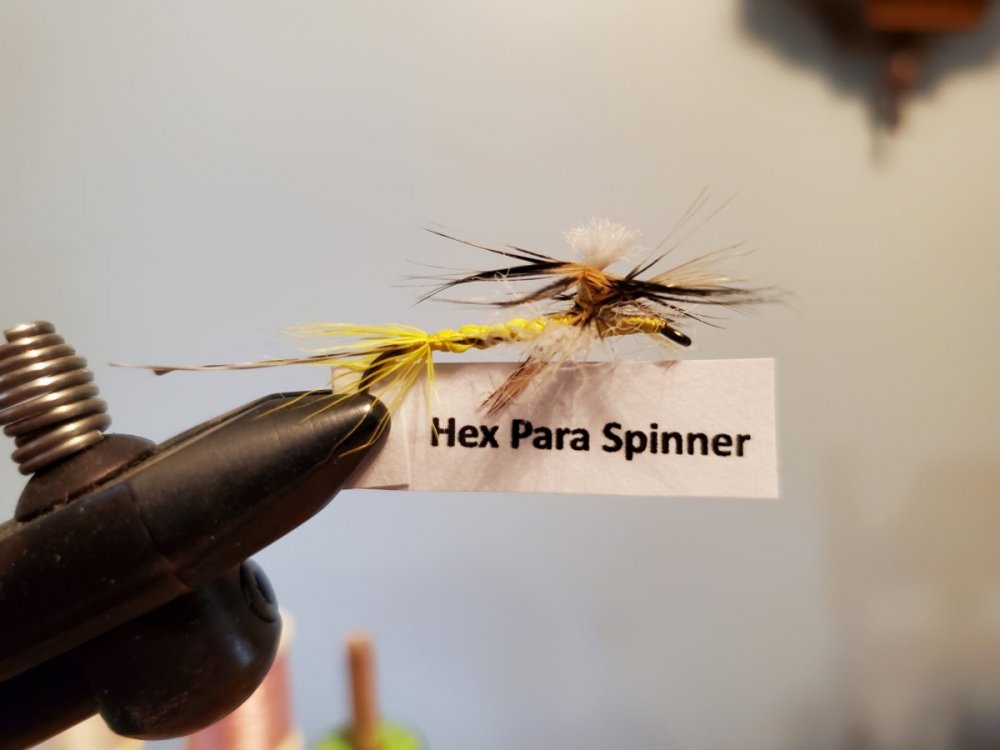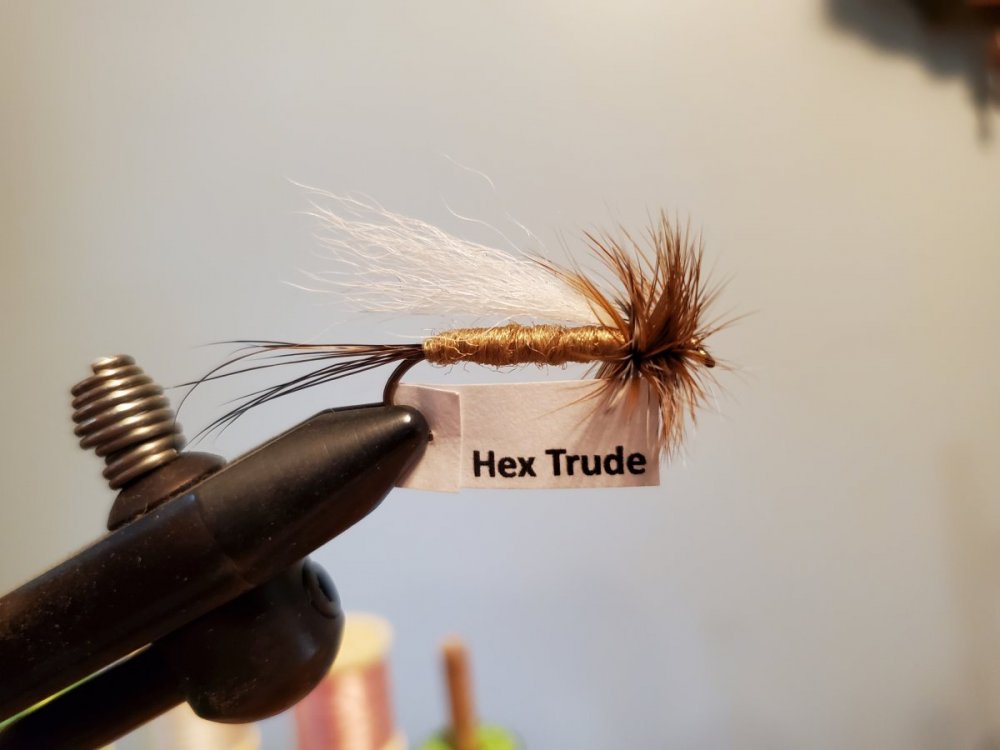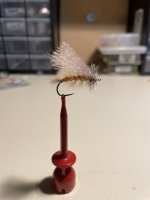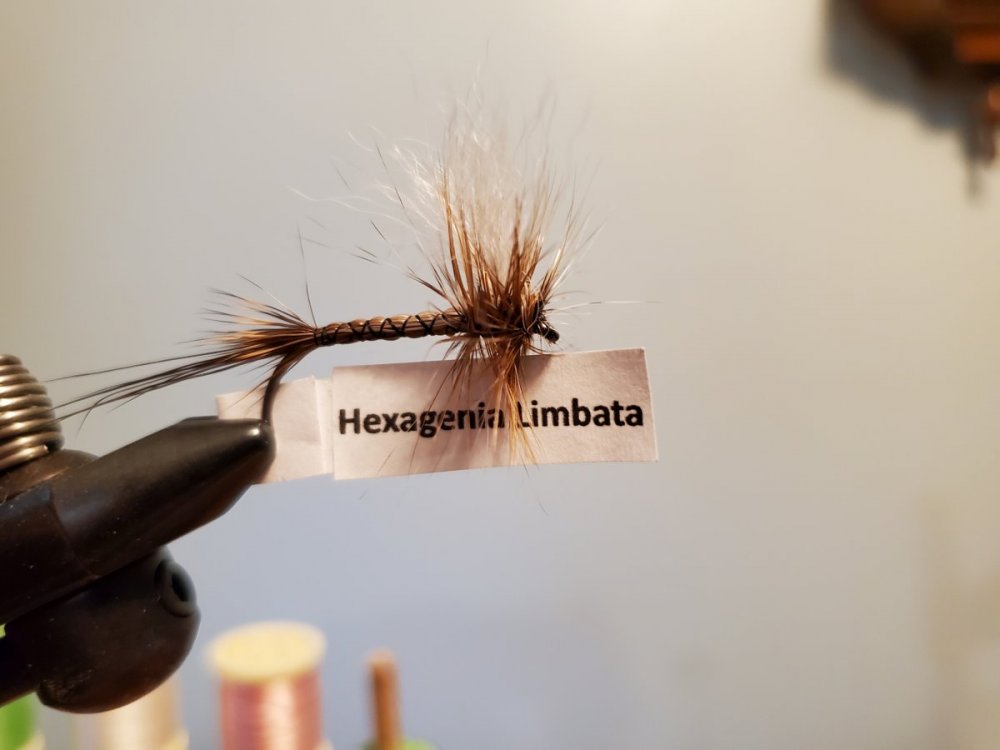Thought I was finished with my flies for Ontario. I went through one of my boxes and removed some colors that haven't worked in a while. Tied these up to fill up the spaces.
Three supersized floating mop flies. Tied on 1/0 Gamakatsu stinger hooks. I can use them as poppers or sub-surface.

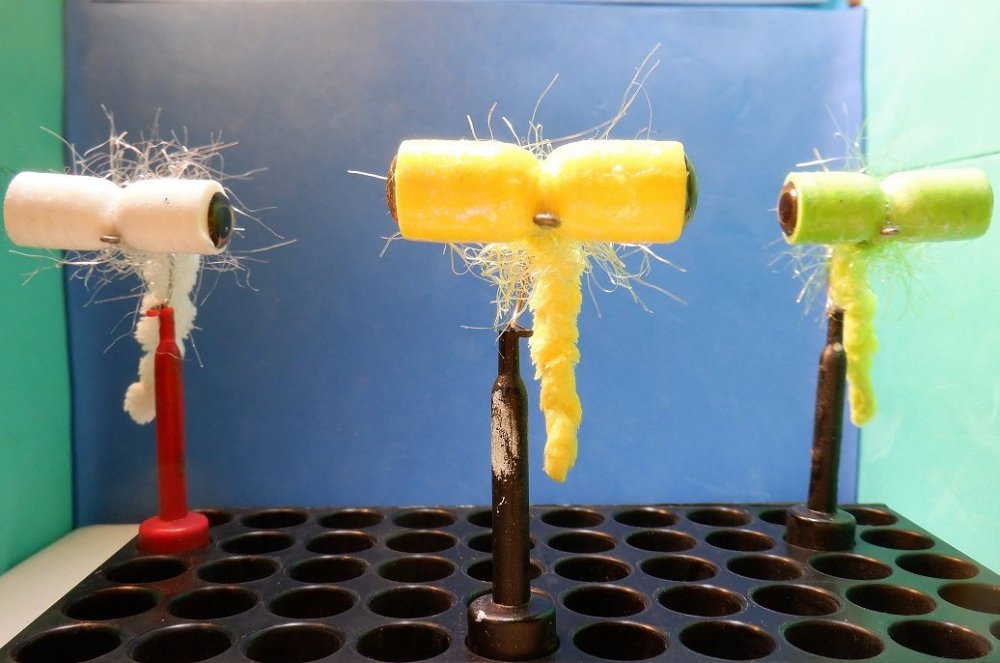
Messing with a couple of articulate flies. Basically Wooly Bugger bodies on articulated shanks with a Daiichi 2461 size 1. Head is a reversed soft foam popper body. I can fish them either on the surface or subsurface of a sinking or intermediate line.
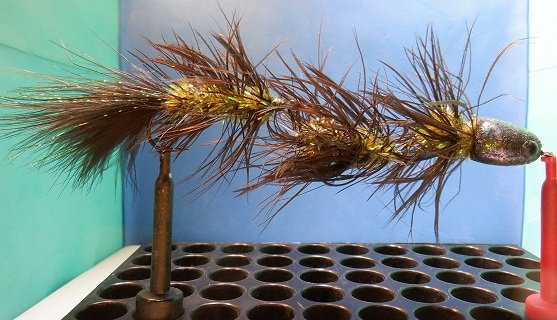

Flies are done and packed.

